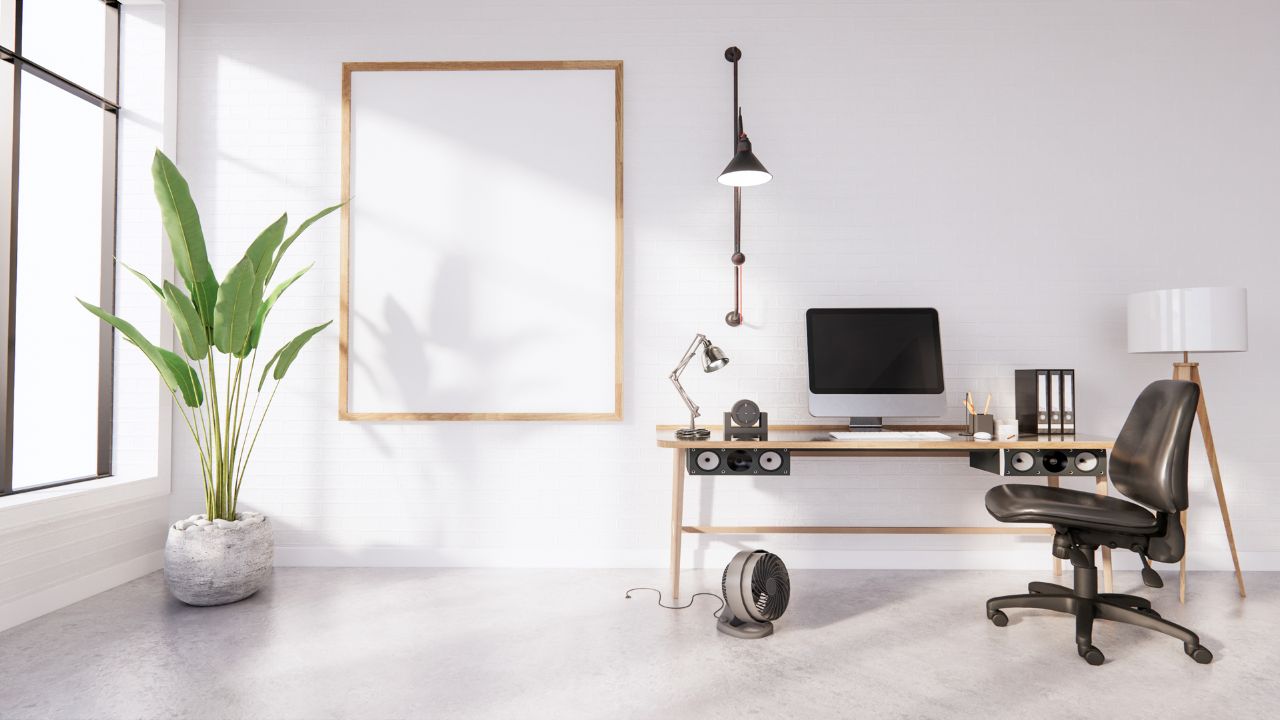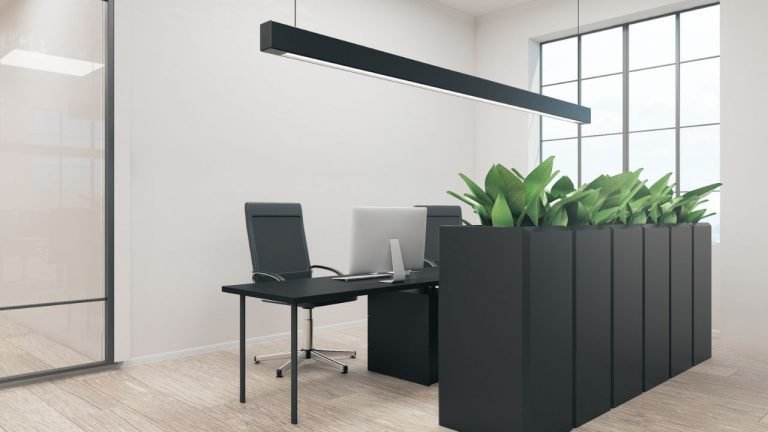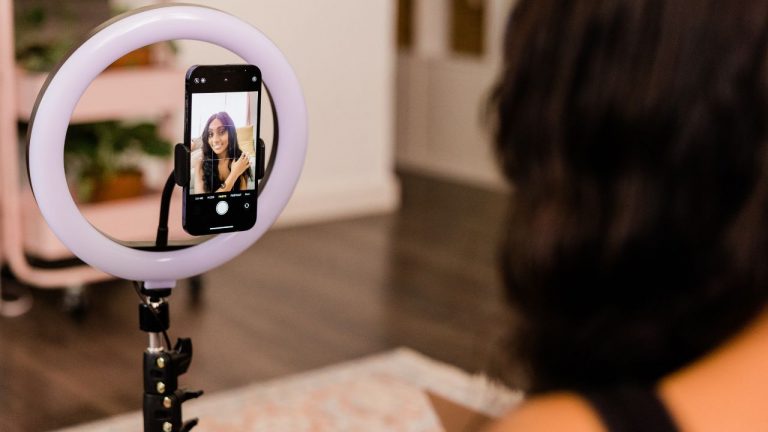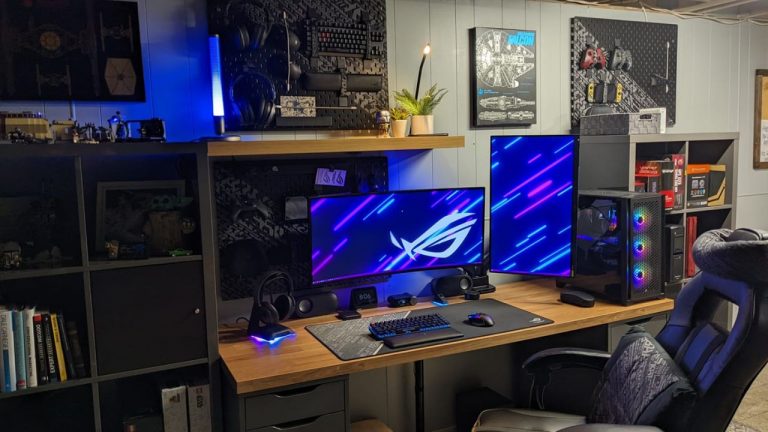How Bright Should Home Office Lighting Be? + Other Questions
Have you ever noticed how different rooms in the house have different lighting? Well, that might be the reason how you feel inside them. And, if you want to buy the perfect lights for your home office, there’s no way to avoid the science behind it. So that brings us to, how bright should home office lighting be?
Your home office lights should provide at least 200 to 250 lux. In other words, you would require 3000 to 4000 lumens of light for a medium size office space in the house. You can place multiple bulbs on the ceilings to reach your ideal brightness level.
In our article, we will answer how you can choose the right brightness for your new home office. We will also show you a detailed guide on what to look for in the packages and how different lighting would actually feel in the office space.
So, let’s not spoil it any more. Keep reading to clear up all your queries.
How Bright Should An Office Light Be?
An office light should be bright enough to illuminate every corner equally. You should be able to read or write without straining your eyes. But, how do you measure this luminosity? Well, there is no straight answer. It entirely depends on the space and its interior.
A big presentation room requires brighter light than a study room. Plus, the color of the wall and furniture also affects the brightness required for a place. However, we can give you an estimation depending on the average room. So, let’s start.
For routine office work, you will require 250-300 lux approximately. Note that we are talking about a medium-sized home office here. It would require a minimum of 500 lux to illuminate a working area. Now, you won’t be able to find a light bulb without knowing some units like lumens and watts. What both of these units stand for will be discussed thoroughly in the later segments. For now, let’s focus on converting lux into lumens or watts.
You see, 1 lux means 1 lumen per square ft. That means, lux refers to how much brightness each square foot is receiving. That’s all. 250 lux would mean 250 lumens per square ft. So, where does that lead us?
Let’s consider the office space is 250 square ft and each square ft needs 250 lumens (which is similar to 250 lux). That means the light bulbs should produce at least 5800 to 6000 lumens in total for that whole area. Now, our shopping gets super easy. Because we have a unit that is easy to find on the labels. You can pick up 6 lights each having 1000 lumens capacity or 3 bulbs with 2000 lumens capacity. The arrangement is totally up to you.
You see, lumens are a better measure of brightness than watts. And why is that? Keep reading to find out.
Can Lights Be Too Bright In An Office?
Yes, it is definitely possible to install a light that is way too bright. But why does that happen? Sometimes you miscalculate the lumens necessary to light up an area. The area could be smaller than what you thought. Or, you might make a mistake while converting the lumens into watts.
If the ideal brightness for your office is 1000 lumens and you buy a 22 watts LED light, it would feel overbright. Because 22 watts will produce up to 1600 lumens. You see, it’s easy to buy an overbright light bulb.
Now, what happens if the office is too bright? First of all, you can develop symptoms like eye strain, hypertension, anxiety, etc. You will be surprised, but over brightness can reduce an object’s visibility. It means your ability to detect details reduces under such lighting.
But, what’s the solution?
- First of all, try to replace it with a new one. Most of the light bulbs come with warranties. If the shop is trusted, they will happily change the bulbs.
- Another tactic is to use a dimmer. If the bulbs are LED, they will come with a regulator. It enables you to adjust the brightness according to your need. That’s a savior in this situation. You can just dim the light to reach the desired level.
- The next solution is to use a diffuser foil. It’s like a shade that is installed on top of the light bulb. As a result, it distributes the light to a larger area. It reduces the concentration of light on each square ft of area. Finally, you can work without getting a headache.
How Many Lumens Do I Need For A Home Office Light?
Before we give our opinion, let’s understand what “lumens” stands for. You see, it’s a unit of measurement just like gallons or pounds. Scientists use it to describe the brightness coming out of a light source. For example, 1 lumen indicates the brightness of one candle. So, 800 lumens would mean the light bulb will give you the brightness of 800 candles.
Now, how many lumens are necessary for your home office? There’s a simple calculation to help you out.
- First of all, determine the length and width of your home office. Use a measuring tape for this purpose. Then, multiply the length and width to get the “square ft” of that area. Suppose it is 200 square ft.
- Moving up to the next step, you have to identify the ideal foot-candle requirement for that specific space. It simply refers to the optimum brightness level necessary for different areas. For example, a 10 to20 foot-candle is considered ideal for meeting or conference rooms. While a full-fledged workstation lighting should have a 50-foot candle capacity.
- Now that, you know how much brightness each square ft needs, the next steps are a piece of cake. Just multiply the foot candle by the total square ft of the room. And, that’s it. You will know how many lumens that room requires.
Let’s show you a real calculation to simplify it even more.
| Steps | Calculation |
|---|---|
| First step: Determine the area in square ft | If Length= 20 ft, width=10 ft, Area=(20×10) = 200 square ft |
| Seconds step: Determine the ideal foot candle | For a medium size office room, the light should reach 20 ft. |
| Third step: multiply the foot-candle requirement by the room’s area. | (200×20) = 4000 lumens of light. |
| Fourth Step: Determine the number of lights | You can install 4 bulbs each producing 1000 lumens. For energy saving LED lights, 19 watts is enough for 1000 lumens. However, for traditional CFLs, you have to look for the ones with 75 watts. |

How Many Lumens Do I Need Above My Desk?
You don’t need too many lumens in your desk lamp. Overbrightness is not pleasant to the eyes. Especially, if you do work remotely and all the tasks require digital devices, anything between 400 to 450 lumens will do the job. You can also clearly read or write in this light.
However, it’s not ideal for more intensive routine work. For example, if you need to proofread or edit for long hours, your eyes can get fatigued. You need brighter lights containing at least 800 lumens for that. Make sure to use lamps that don’t send the light at a 360 degrees angle. The more concentrated or narrower the beam is, the better brightness you can expect.
Also, the color temperature plays a role in determining how much brightness a bulb can provide. Stick with us to know about that.
Now, if all the calculation exhausts you, you can opt for an intelligent desk light. It does what it says. It is programmed to self-regulate the brightness according to the current luminosity of the room. Imagine it’s daytime and the room is getting enough natural light through the window. The desk lamp would automatically dim itself not be overbright.
That’s how it also adjusts itself during late nights when other sources of light are not available. Isn’t it wonderful?
What Is The Difference Between Lumens & Watts?
That’s a pretty common question. Previously, all the traditional incandescent bulbs used to have watts written on the packaging. Buyers would see the numbers and compare the brightness easily. For example, if a bulb draws 100 watts of energy, it surely was brighter than an 80-watt bulb. There was no confusion whatsoever since the unit of measurement was universal.
The problem arose after the introduction of LED or energy-efficient bulbs. Technically, a watt is not connected to light. It is a unit to measure energy. More watt indicates more energy and nothing else. Since more energy demand ultimately leads to better brightness, people used to connect watt with brightness. After all, they needed a scale to compare different bulbs.
However, energy-efficient bulbs soon took over the market. But there was one problem. Since these bulbs were designed to save as much energy as possible, they became incomparable with the traditional ones. For example, a 26 watts energy-efficient bulb can give the same amount of brightness as the 100 watts incandescent bulb. So, it was illogical to use watts as a scale of comparison. So, what’s the solution?
Well, the manufacturers started using the unit of brightness which is called lumens. It is very straightforward and only tells you how much light you can expect from a tube or bulb. Let’s show you a simple table to visualize the difference between watts and lumens.
| Brightness In Lumens | Incandescent Bulbs | Energy Saving Bulbs |
|---|---|---|
| 400 | 40 watts | 9 watts |
| 800 | 60 watts | 13 watts |
| 1000 | 75 watts | 19 watts |
| 1600 | 100 watts | 22 watts |
It must be clear to you why energy-saving LED bulbs couldn’t use watts as a unit anymore. Because a 22 watts energy saving bulbs give you 1600 lumens of brightness while a 60 watts CFL or incandescent bulb only gives 800 lumens.
Are 3000 lumens too bright?
3000 lumens might sound like a lot of brightness, but it’s not. It is the right amount for a corporate space. Considering a small office space in your home (12×12 square ft), 3000 lumens give us approximately 250 lux or 250 lumens per square. As we told earlier, any task room requires at least 200 to 300 lux to become ideal. Anything less than that would work for the kitchen or bedroom only.
To be honest, the brightness of 3000 lumens can fall short if you are an artist. For works like designing or painting where a lot of attention to detail is needed, you need at least 500 to 750 lux in your studio. And, you need 6000 lumens to bring that much luminosity. Being said that, remember that your office or studio size is the ultimate factor here. It would require more lumens with each increasing square ft.
Are 800 Lumens Very Bright?
800 lumens are decent for LED light bulbs. But it is not going to feel too bright in any kind of office setting. It works best when your job is mostly computer related. However, to carry on tasks like reading or writing for longer hours, 800 lumens might not be sufficient.
Let’s elaborate on our answer. Suppose the office space in your house is 10×10 ft. That brings us to 100 square ft, right? So, for each square ft, you are getting (800/100) = 8 lumens. So, the brightness you will get is 8 lux. If you have gone through our explanation of how lux works, you will know why this brightness is too low.
You need at least 200 lux in your office task for everyday work. It can be reduced to 100 to 150 lux if you only do typing or similar tasks. It also depends on how big the office space is or what color the walls are. It will require even more lumens to light up a 20×20 square ft room having somewhat darker walls.
Nonetheless, 800 lumens seem very low for your home office. If you still want to stick with it, we won’t stop you. Just try to bring at least 3 bulbs each providing 800 lumens.
However, the purpose of lighting can change our answer too. For example, 800 lumens can be too bright if you only want to use it as a desk lamp instead of the main light. Desk lamps focus all the brightness in one specific direction. That’s why the light feels brighter with the same amount of lumens or lux. For example, if you use a torch with 800 lumens, it can easily cover a 200m distance.
How To Choose The Best Color Temperature For Home Office Lighting?
Color temperature is an important factor that affects the quality of light in your home office. But how is that? And, most importantly what does color temperature even mean? Well, color temperature simply means the tone or feel that various lightings add to the space. Have you ever felt more focused in a different kind of lighting? Or, why is it so hard to not fall asleep in the bedroom? You guessed it. The color temperature is behind all of it.
And, that’s why the unit of measurement is Kelvin as any other type of temperature in the world. Any light has a color temperature between 1000 to 10,000 kelvin. The higher you get on the scale, the brighter the light will feel. That’s the science behind why the same type of light source provides different feels.
So, what is the right color temperature we should be looking for? It depends on what kind of work you do. If you want the area to have a light that mimics natural daylight, look for at least 6000 to 6500k. This is also the coolest tone on the scale. But this much brightness can be overwhelming for a small office room. It works best for designing art pieces in a big studio. Or, if you have a conference or meeting room, you can try 6000k for the lights.
Likewise, you need 3500 to 4500k for doing general office work. This level of temperature gives a blue tone to the light as well. That’s why you don’t fall asleep that easily. Anything less than 3500k would feel warm and cozy. For example, a temperature of 3000k has a yellow or orange tone in it. Although that’s a nice thing for bedrooms, it’s a big NO if the question involves productivity.
Wrapping Up
Nobody likes to get all technical while shopping for light tubes. We also wish it was as easy as choosing the color of the wall. But, the brightness of your workspace clearly affects your eye health. That’s why we encourage you to determine how bright your home office lighting should be before anything else.
We tried to give an elaborate answer to all of your queries throughout this article. Hopefully, you won’t have to search for any more information online. All you have to do now is measure your room, follow our calculation and identify the right level of brightness for your home office.
So, what are you waiting for? Let the actual work begin!


![Best Color Temperature For Home Office Lighting [Beginner’s Guide]](https://homethereby.com/wp-content/uploads/2022/09/Best-Color-Temperature-For-Home-Office-Lighting-768x432.jpg)



